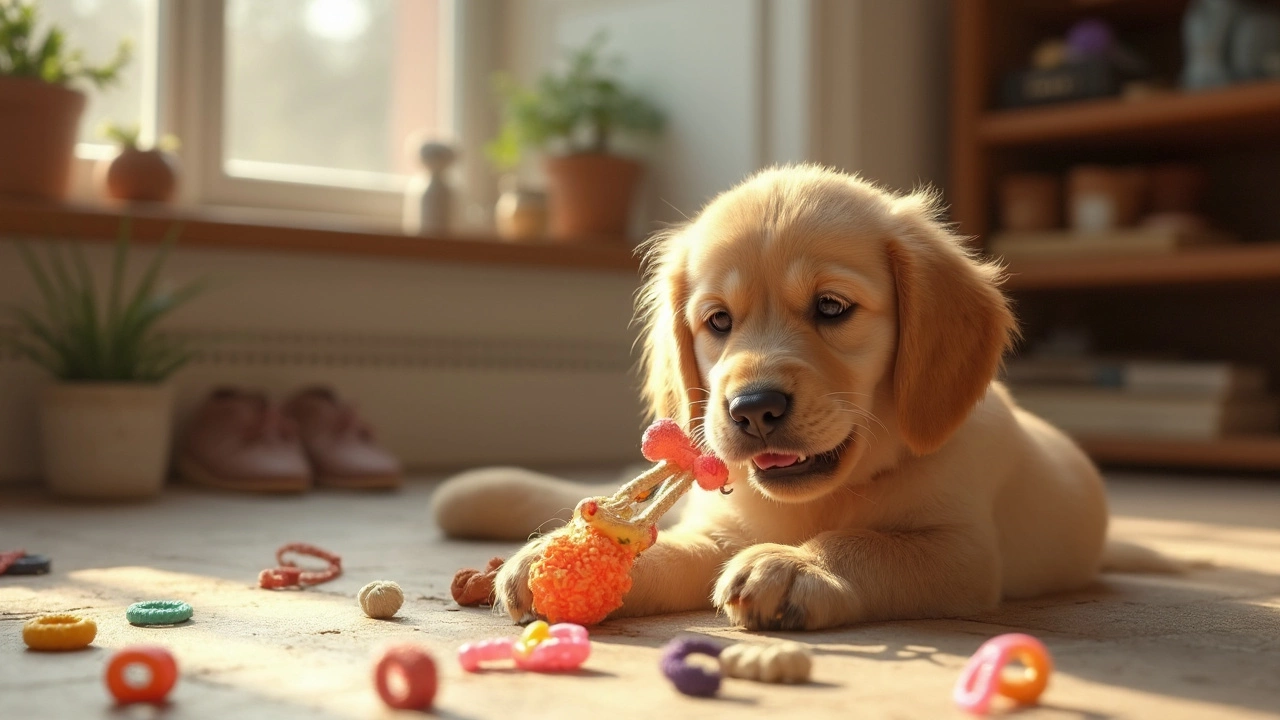Puppy Chew Toys – Safe, Fun & Durable Picks for Your New Pup
If you’ve just brought a puppy home, you know the chew craze starts fast. Tiny teeth, endless curiosity, and a need to soothe gums make chew toys a must‑have. The right chew toy can keep your furniture safe, help teeth develop properly, and give your pup a healthy way to burn energy.
Why Chew Toys Matter for Puppies
Chewing isn’t just a habit; it’s a natural behavior. Puppies use their mouths to explore the world, and the act of gnawing massages the gums, eases teething pain, and encourages proper jaw alignment. A good chew toy also supports dental health by scraping away plaque as the pup bites and chews. Choose toys that are firm enough to clean the teeth but soft enough to avoid damaging the developing enamel.
Another big win is mental stimulation. A bored puppy will find the nearest shoe or cushion to chew. By giving a variety of textures—rubber, rope, plush—you keep the mind occupied and reduce destructive behavior. So, a chew toy does more than entertain; it protects both your home and your pup’s health.
Choosing the Right Chew Toy
Start with size. A toy that’s too big can be a choking hazard, while one that’s too small might be swallowed whole. Most manufacturers list the ideal weight range; aim for a toy that fits comfortably in your puppy’s mouth and can be gripped with their paws.
Material matters a lot. Natural rubber toys like KONGs are tough and can be stuffed with treats for extra fun. Rope toys are great for flossing teeth, but watch for frayed ends that could be ingested. Soft plush toys are okay for gentle chewers, but they should be reinforced with double stitching to survive a strong bite.
Safety is non‑negotiable. Avoid toys with small parts, squeakers that break off, or toxic chemicals. Look for BPA‑free, phthalate‑free labels, and choose products that meet UK pet‑toy safety standards. If a toy starts to crumble, retire it immediately.
Rotate the toys. Giving the same toy every day gets boring fast. Keep a handful of different textures on hand and switch them out every few days. This keeps the puppy’s interest high and helps you spot any wear before it becomes a safety issue.
Finally, consider the chew type. Some puppies love to gnaw on hard rubber, while others prefer softer, rope‑like textures. Observe how your pup interacts with each toy and adjust accordingly. A well‑matched chew toy will become a favorite that lasts months, even through the toughest chewing phases.
In short, pick a chew toy that fits your puppy’s size, offers a safe material, and matches their chewing style. Rotate often, inspect regularly, and you’ll see fewer chewed‑up shoes and a happier, healthier pup. Happy chewing!
Posted By Bryndle Redding On 20 May 2025 Comments (0)
What Can an 8 Week Old Puppy Chew On? Safe and Fun Ideas
Not sure what’s safe for an 8 week old puppy to chew on? This article breaks down the best chew options, danger zones, and tips to help you manage that constant need to gnaw. Learn how the wrong toys can hurt your puppy, why teething matters so much at this stage, and how to keep both your puppy and furniture safe. Let’s save your shoes and help your pup through the teething days without worry. Every tip here is something I’ve actually used at home.
READ MORE